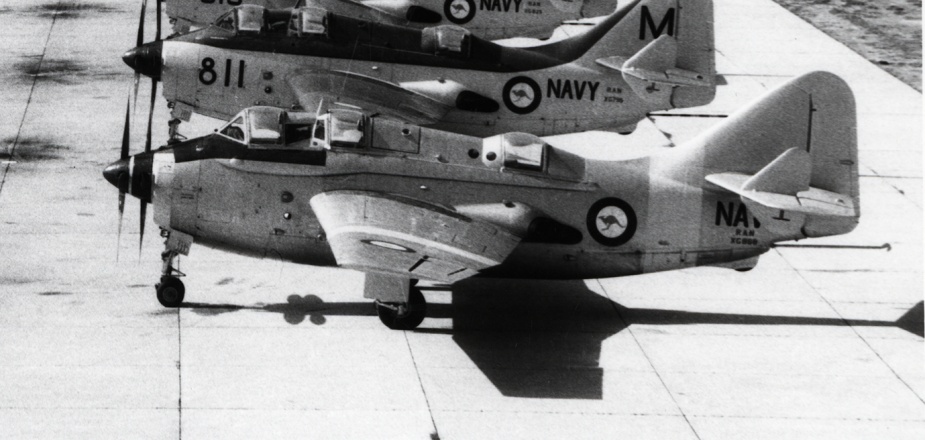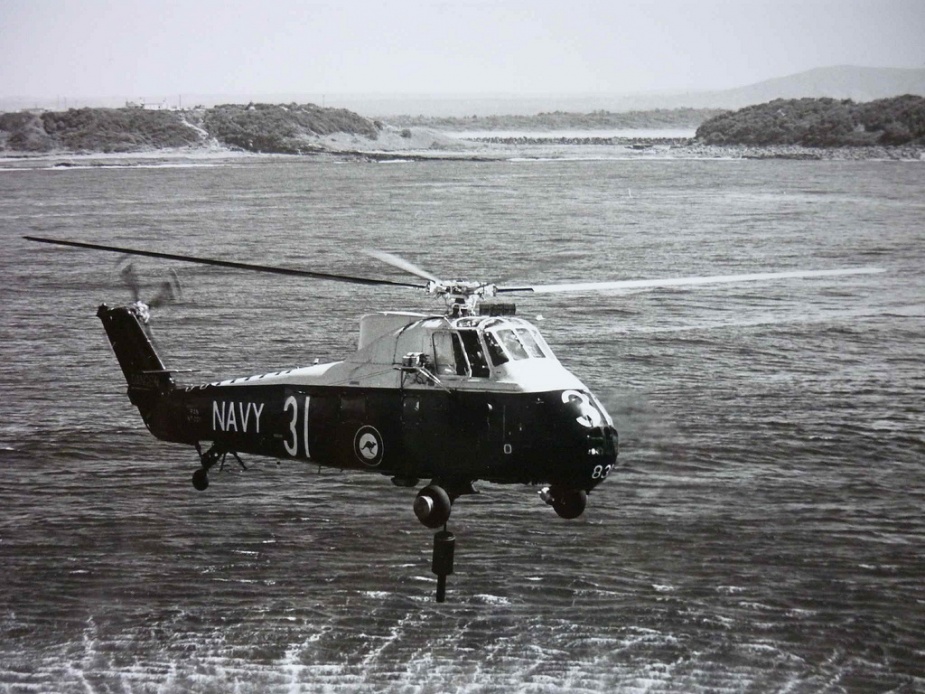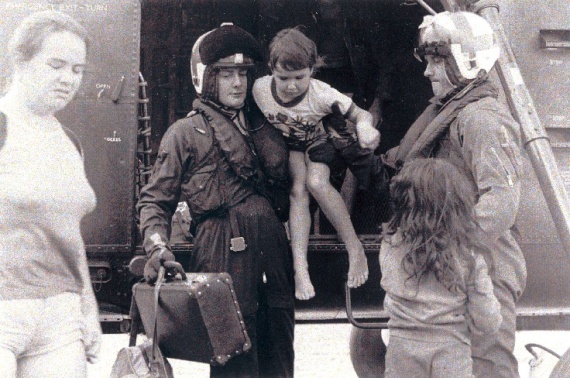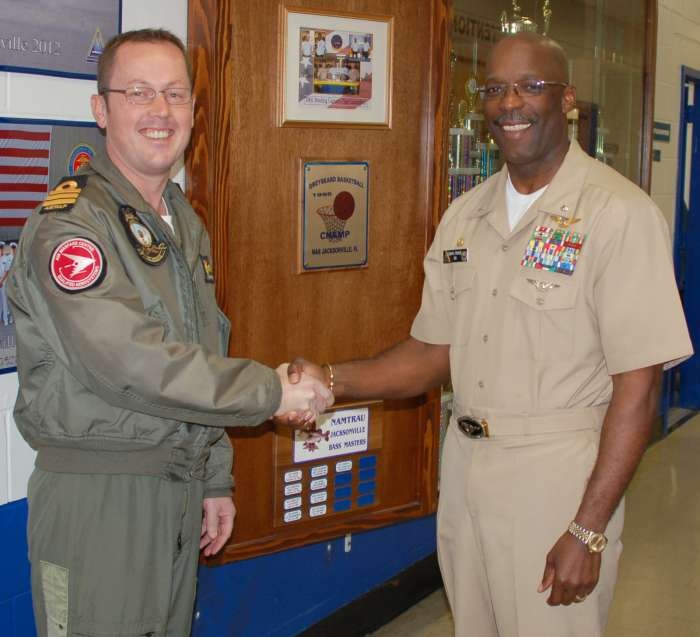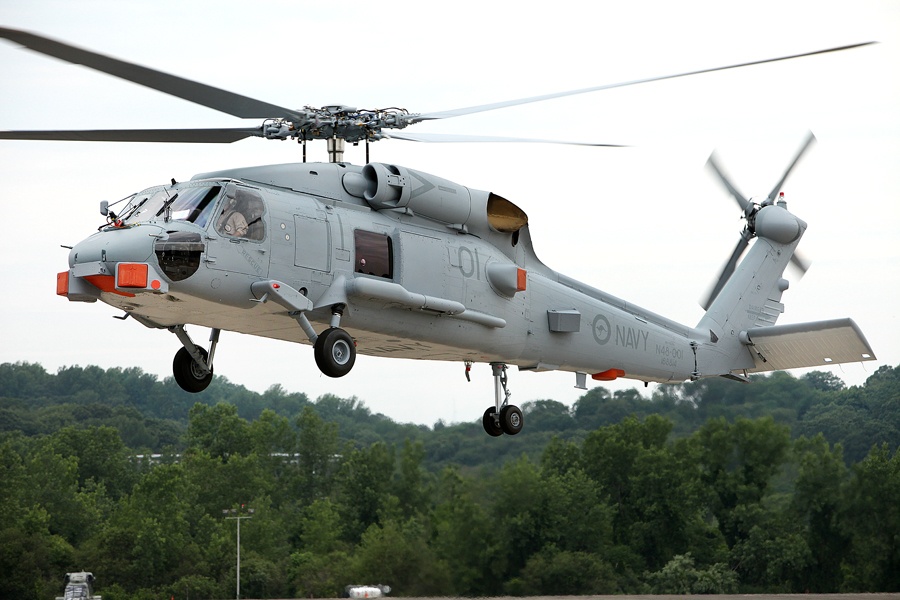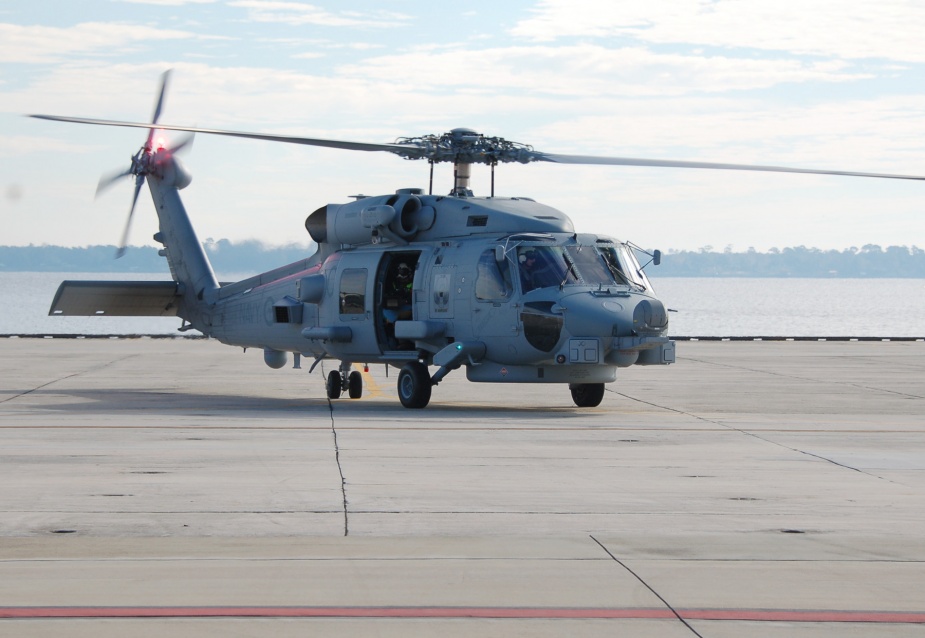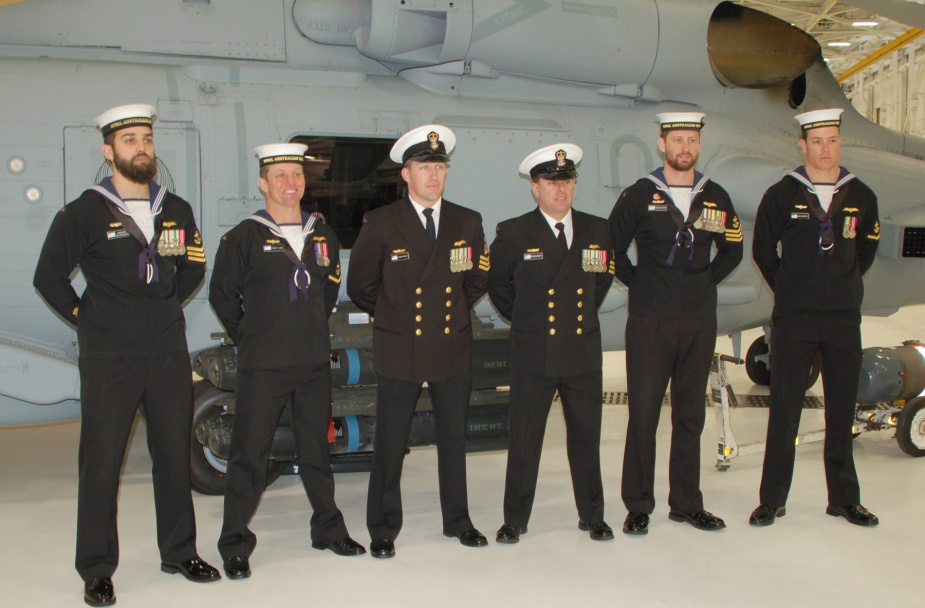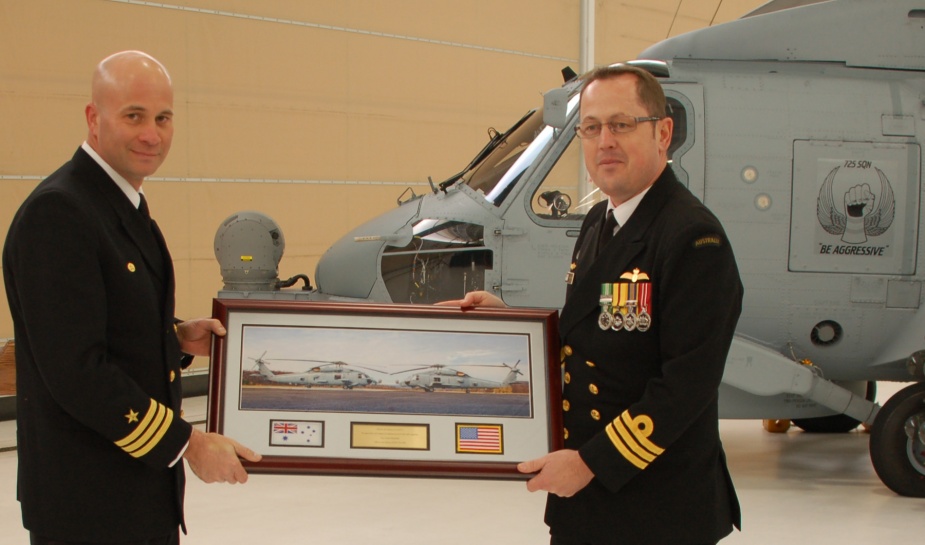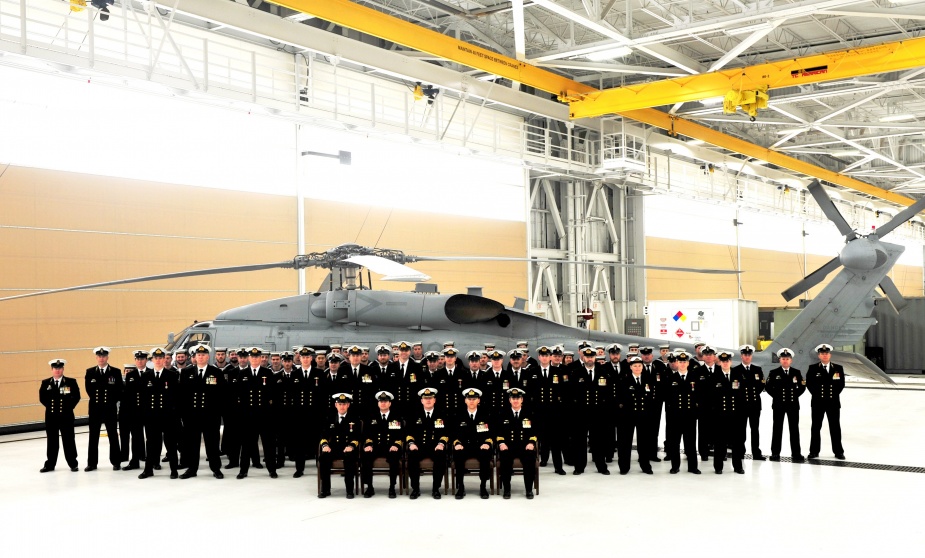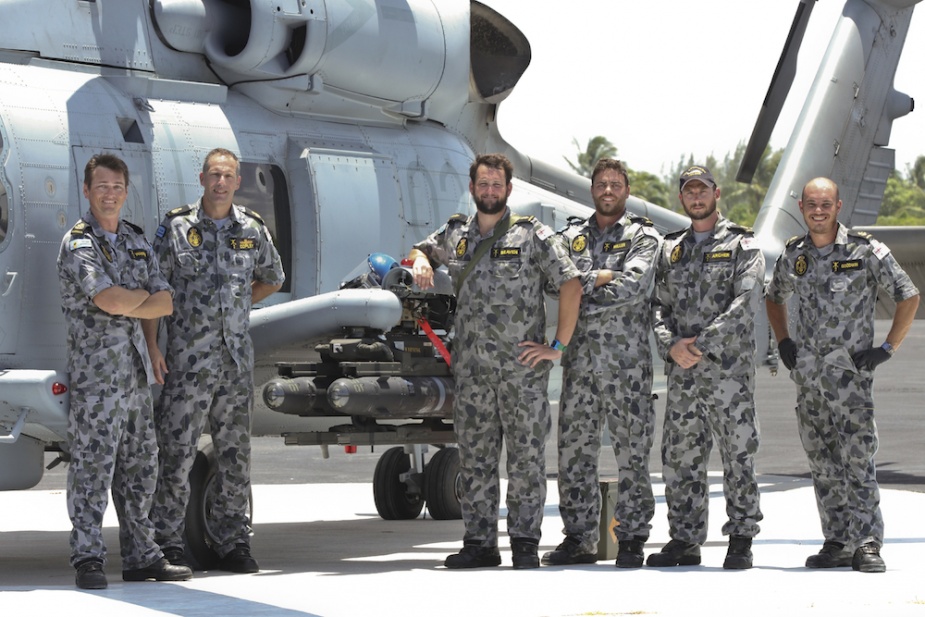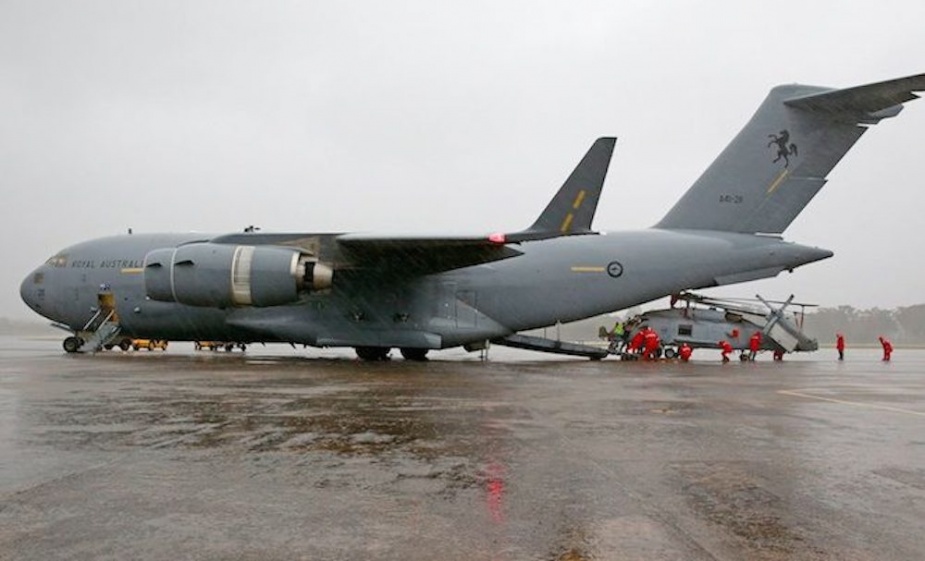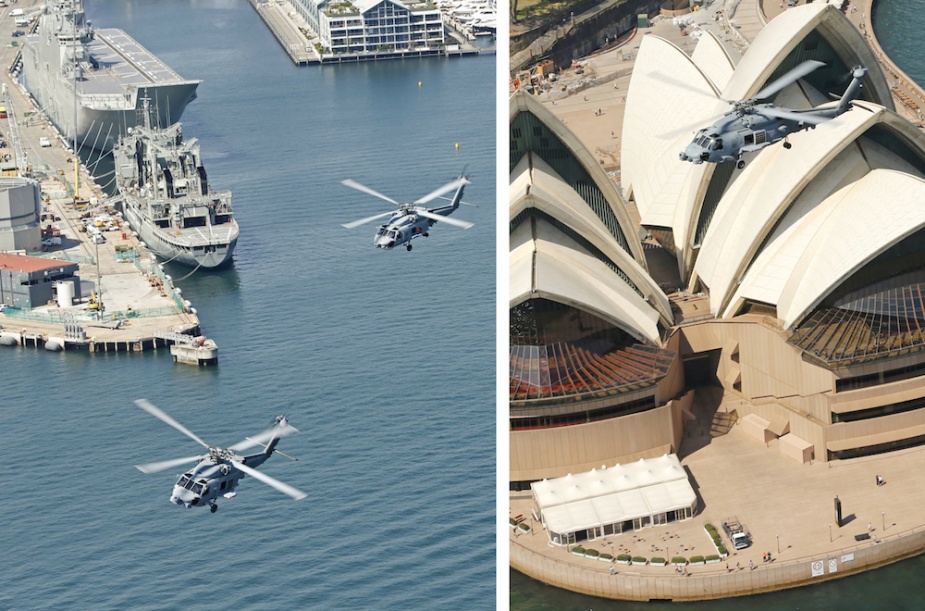725 Squadron History
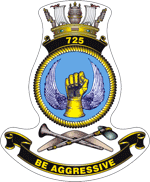
725 Squadron has its origins in the Royal Navy (RN) where it was formed as a Fleet Requirements Unit on 27 August 1943. The Squadron's aircraft and operations were varied before moving to Cornwall to become an Air Target towing unit in August 1945. The Squadron was disbanded in December that year.
725 Squadron recommissioned in the Royal Australian Navy (RAN) at Naval Air Station (NAS) Nowra as a Fleet Requirements and Communications Unit on 13 January 1958. Under the command of Lieutenant Commander John Brown, the Squadron flew a variety of aircraft including Douglas C47A Dakota, Auster J5-G Autocar, Hawker Sea Fury Mark 11, Fairey Firefly AS-5 and Fairey Gannet AS1. In May 1959, the Squadron's role was changed to Anti-Submarine Warfare (ASW) training.
725 Squadron suffered its only fatality on 28 December 1959 when Sub Lieutenant LA Mauritz's Gannet crashed attempting to land at NAS Nowra. The Gannet's unusual twin engine configuration, driving two counter rotating propellers located one behind the other, enabled the Gannet to fly with only one engine engaged in order to conserve fuel and extend endurance, however, both engines had to be engaged when taking off or landing. Mauritz was attempting a single engine landing with tragic consequences.
Part of 725 Squadron's responsibilities was to provide interception practice for Direction Officers training at HMAS Watson in the Radar Plot branch. The Squadron also provided aircraft for ships working up at sea near Jervis Bay performing varied tasks such as radar and communications calibration exercises through to mock attacks with multiple aircraft.
The Squadron was decommissioned on 31 May 1961 and absorbed into 724 Squadron.
725 Squadron recommissioned on 1 November 1962 flying the first two Westland Wessex 31A helicopters delivered to the RAN for ASW training and support to 817 Squadron, the Fleet Air Arm's (FAA) front line Wessex Squadron. 725 Squadron was eventually equipped with ten Wessex helicopters.
On 10 February 1964 at 8:56pm, HMAS Melbourne (II) collided with HMAS Voyager (II) in one of the most tragic accidents in Australian naval history. The disaster resulted in the loss of 82 lives, all from Voyager. 725 Squadron participated in search and rescue efforts in the aftermath of the collision.
The Squadron also embarked in HMAS Sydney (III) throughout the 1960s, providing anti-submarine escort duties during her many troop transport voyages to Vietnam, a responsibility it shared with 817 Squadron. The Wessexes were equipped with dipping sonar and an offensive armament of torpedoes and depth charges in its ASW role. While in the operational area, the normal routine was to have one Wessex screening the ship while another was fully armed and prepared on her deck. Shortly afterwards the RAN's FAA Squadrons adopted US Navy prefixes and 725 Squadron became HT725 Squadron indicating that it was classed as a rotary wing training unit.
The FAA became embroiled in industrial unrest in July 1974 when the Storeman and Packers Union black banned the RAN resulting in fuel shortages and flying restrictions. This became a serious, and even life threatening, issue the following month when heavy rain and flooding inundated the Nowra area. The FAA, including HT725 Squadron, was called upon for disaster relief operations but the fuel shortage gave rise to concerns about whether rescue efforts would have to cease. Eventually common sense prevailed and fuel tankers began to arrive allowing personnel from NAS Nowra to rescue some 352 people.
725 Squadron decommissioned on 27 December 1975.
In June 2011, the Government announced the acquisition of 24 Sikorsky MH-60R Seahawk ‘Romeo’ naval combat helicopters as replacements for the Sikorsky S-70B-2 Seahawks. On 13 December 2012, it was announced that 725 Squadron would recommission as the new training squadron for the Romeo aircraft while 816 Squadron will be the operational support squadron. NUSQN 725 was stood up on 11 February 2013 under the command of Commander David Frost, RAN. The acquisition of the Romeo was for a ‘total package’ including training, technical and logistic support from the United States Navy (USN).
The Squadron’s aircrew and maintainers are training at Naval Air Station (NAS) Jacksonville and Naval Station (NS) Mayport, both located in Jacksonville, Florida, USA. The first group of more than 30 maintainers left Australia on 8 March 2013 and began their training at NAS Jacksonville’s Center for Naval Aviation Technical Training Unit on 1 April. By the time the Squadron returns to Australia in 2015, around 65 maintainers will be qualified to service and repair the Romeos.
The first aircrew were certified to fly the Romeo on 16 August 2013 and six days later, the Squadron moved into its own hangar space in building 1122 at NAS Jacksonville.
The first RAN Romeo successfully completed its initial test flight on 26 June 2013 at Sikorsky’s production facility in Stratford, Connecticut, USA, before transferring to Lockheed Martin’s facility in Owego, New York, to be fitted with its mission systems and sensors.
NUSQN 725 moved into its own hangar space in building 1122 at NAS Jacksonville on 22 August and took delivery of their first two aircraft on 12 December 2013. The two Romeos were formally accepted into RAN service by NUSQN 725 on 24 January 2014 at a ceremony attended by the Squadron, their American counterparts, family members, the Australian Defence attaché in Washington, Rear Admiral Steve Gilmore, and the commander of the USN 4th Fleet, Rear Admiral Sinclair Harris, USN.
The next two aircraft arrived at Jacksonville in late February 2014 along with a non-flying MH-60R ‘Bromeo’ maintenance training aid airframe, the first of two, which will be used to train aircrew and maintainers. The Bromeo is a cost-effective way to expedite training free from the constraints of flying and operational commitments of in service aircraft. At around the same time another group of aviation maintainers arrived bringing the total of RAN FAA personnel at Jacksonville at that time to 95. That number increased to 112 by October when the first Romeo was delivered to Australia, and all had returned to Nowra by the end of the year.
In the last week of August the squadron participated in Exercise GREY FOX, the biggest missile firing exercise ever undertaken by the USN’s Helicopter Maritime Strike Wing Atlantic. The Strike Wing was responsible for seven USN Romeo squadrons and was also supporting NUSQN 725 in the USA. The exercise involved the coordinated delivery of 29 Hellfire missiles, nine of which were fired by NUSQN 725, the most of any squadron across the Strike Wing. The ability to make such a significant contribution to the exercise was a testament to the dedication of both the deployed members of the squadron and the support they had received from their USN counterparts. The Squadron continued to make use of the opportunity to participate in large scale international exercises while in American waters.
The first Romeo arrived at HMAS Albatross on 14 October 2014 along with the Bromeo training airframe and moved into brand new facilities at the air station. They were transported aboard a Royal Australian Air Force C-17A Globemaster from NAS Jacksonville and were followed by two more Romeos over the following three weeks. That same month the squadron surpassed 1,000 flight hours in the Romeos while undergoing training in the USA.
The Romeo made its maiden Australian flight on 14 November 2014 when the crew of Lieutenant Commander Todd Glynn, Lieutenant Craig Castle and Leading Seaman Liam Carruthers flew the helicopter from Albatross to Sydney. The aircraft flew over Sydney Harbour and hovered over some of the city’s most iconic sites where Sydneysiders gave the helicopter a rousing reception.
The MH-60R Seahawk ‘Romeo’ became part of 725 Squadron in a recommissioning ceremony at HMAS Albatross in Nowra, New South Wales on 11 June 2015.
725 Squadron was granted Freedom of Entry to the City of Coffs Harbour, which was exercised on 19 May 2016. Commander Matt Royals led over one hundred personnel on a march through the city while four MH-60R conducted a fly-past. Following the march, the local council hosted a reception to welcome the squadron. This event set the foundations for what has been a close relationship between the squadron and Coffs Harbour, with squadron personnel regularly attending local commemorative events in the city.

The first aircrew to complete the RAN MH-60R Operational Flying Training were Leading Seamen Ivan Plavsic and Adam Wade who completed their Sensor Operator Course on 21 March 2016. The first Pilot and Aviation Warfare Course graduated on 20 May 2016. Since then, aircrew training has continued non-stop, with the course content remaining aligned with the USN, but delivered to meet Australia’s unique requirements. This has ensured a steady stream of MH-60R pilots, AvWOs and SENSOs have been provided to 816 and 808 Squadrons.
The squadron has also contributed personnel and aircraft to national tasking in times of crisis. During the 2019 Black Summer Bushfires that ravaged the Shoalhaven region, squadron personnel were recalled from Christmas Leave in order to provide aircraft and support local efforts. This continued until the Fleet Air Arm’s support ended on 19 February 2020. Later that year, the COVID-19 Pandemic brought challenges to training and squadron routines. Through ingenuity and resilience, squadron operations continued with a reduced yet steady output.
After nearly a decade of training MH-60R Aircrew, 725 Squadron remains the ‘engine room’ of the Fleet Air Arm by providing qualified, authorised and experienced aircrew and maintenance personnel to front-line units.
Chronology of 725 Squadron History
| Date | Event |
| 27 Aug 1943 | Formed as a RN Squadron |
| Dec 1945 | Disbanded |
| 13 Jan 1958 | Recommissioned into the RAN at NAS Nowra as a fleet requirements and communications unit flying a range of aircraft |
| 31 May 1961 | Decommissioned at NAS Nowra |
| 01 Nov 1962 | Recommissioned at NAS Nowra with Wessex helicopters for ASW training |
| 10 Feb 1964 | HMAS Voyager disaster, 725 Squadron assists in search and rescue efforts |
| 27 Dec 1975 | Decommissioned at NAS Nowra |
| 11 Feb 2013 | Re-established as NUSQN 725 |
| 12 Dec 2013 | Took delivery of the RAN's first two Sikorsky MH-60R Seahawk ‘Romeo’ naval combat helicopters |
| 11 Jun 2015 | Recommissioned at HMAS Albatross |
| 21 Mar 2016 | The first aircrew graduate the RAN-delivered MH-60R SENSO Operational Flying Training |
| 20 May 2016 | The first Pilots and Aviation Warfare Officers graduate the RAN-delivered MH-60R Pilot/AvWO Operational Flying Training |
| 25 Oct 2016 | The final two MH-60R aircraft are accepted by the RAN |
Commanding Officers of 725 Squadron
| Assumed Command | Commanding Officers |
| 13 Jan 1958 | Lieutenant Commander JMW Brown |
| 05 Jan 1959 | Lieutenant Commander KM Barnett |
| 20 Jul 1959 | Lieutenant Commander P Goldrick |
| 27 Jul 1959 | Lieutenant Commander AE Payne |
| 01 Nov 1962 | Lieutenant Commander DG Hilliard |
| 08 Nov 1962 | Lieutenant Commander BF Matthews |
| 06 Oct 1965 | Lieutenant Commander N Ralph |
| 19 Jun 1967 | Lieutenant Commander PD Campbell |
| 23 Oct 1967 | Lieutenant Commander SBE Courtier |
| 22 Jan 1968 | Lieutenant Commander AG Whitton |
| 05 Jan 1970 | Lieutenant Commander DN Rogers |
| 01 Jun 1970 | Lieutenant Commander ES Bell |
| 08 Feb 1971 | Lieutenant Commander DN Rodgers |
| 18 Oct 1971 | Lieutenant Commander ES Bell |
| 14 Oct 1972 | Lieutenant Commander GR Rhorsheim |
| 23 Jan 1974 | Lieutenant Commander BJ Boettcher |
| 17 Jan 1975 | Lieutenant Commander WP James, DSC |
| 11 Feb 2013 | Commander DL Frost (as CO NUSQN 725) |
| 04 Dec 2015 | Commander MB Royals |
| 25 Jan 2018 | Commander SJ Buckham |
| 15 Jan 2020 | Commander J Hawley |
| 07 Dec 2021 | Commander MJ Baxter |
| 11 Dec 2023 | Commander RF McErlean, CSM |
Battle Honours
Further Reading
- Flying Stations: A Story of Australian Naval Aviation, Australian Naval Aviation Museum, Allen & Unwin, St Leonards, 1998.
- Flying Squadrons of the Australian Defence Force, Steve Eather, Aerospace Publications, Canberra, 1995.
- Wings Across the Sea, Ross Gillett, Aerospace Publications, Canberra, 1988.
- Australia's Navy in Vietnam, John Perryman and Brett Mitchell, Topmill Pty Ltd, Silverwater NSW, 2007.

